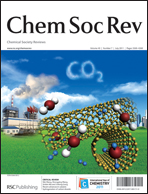Metal-catalysed approaches to amide bond formation
Abstract
Amongst the many ways of constructing the amide bond, there has been a growing interest in the use of metal-catalysed methods for preparing this important functional group. In this tutorial review, highlights of the recent literature have been presented covering the key areas where metal catalysts have been used in amide bond formation. Acids and esters have been used in coupling reactions with amines, but aldehydes and alcohols have also been used in oxidative couplings. The use of nitriles and oximes as starting materials for amide formation are also emerging areas of interest. The use of carbon monoxide in the transition metal catalysed coupling of amines has led to a powerful methodology for amide bond formation and this is complemented by the addition of an aryl or alkenyl group to an amide typically using palladium or copper catalysts.


 Please wait while we load your content...
Please wait while we load your content...